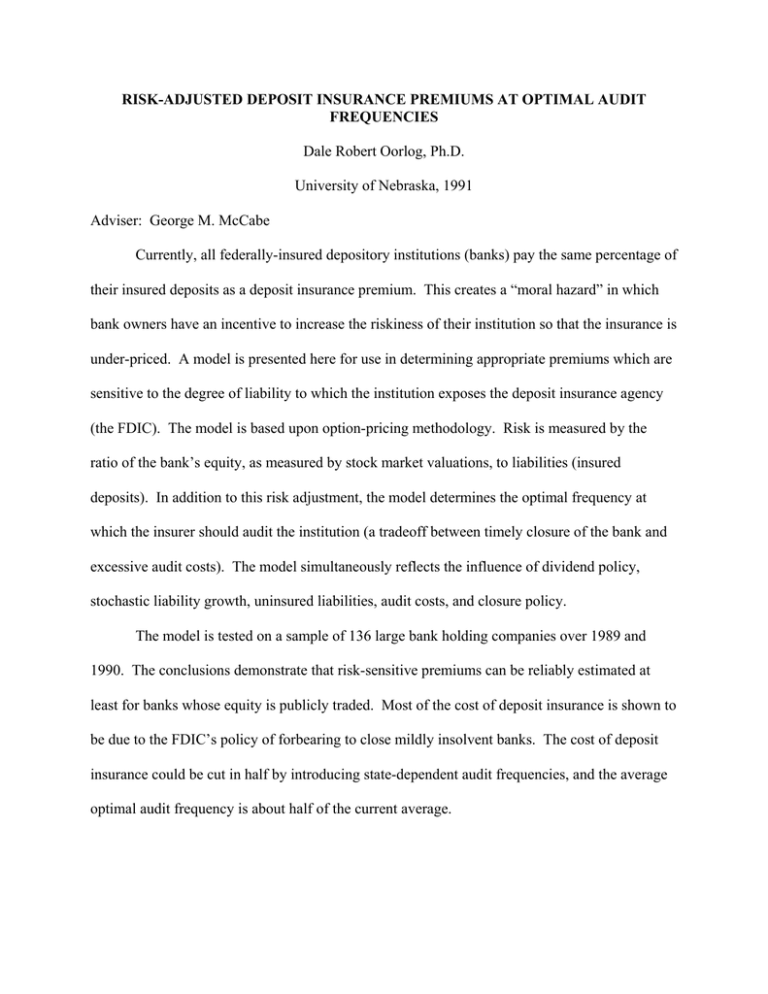RISK-ADJUSTED DEPOSIT INSURANCE PREMIUMS AT OPTIMAL AUDIT FREQUENCIES Dale Robert Oorlog, Ph.D.
advertisement

RISK-ADJUSTED DEPOSIT INSURANCE PREMIUMS AT OPTIMAL AUDIT FREQUENCIES Dale Robert Oorlog, Ph.D. University of Nebraska, 1991 Adviser: George M. McCabe Currently, all federally-insured depository institutions (banks) pay the same percentage of their insured deposits as a deposit insurance premium. This creates a “moral hazard” in which bank owners have an incentive to increase the riskiness of their institution so that the insurance is under-priced. A model is presented here for use in determining appropriate premiums which are sensitive to the degree of liability to which the institution exposes the deposit insurance agency (the FDIC). The model is based upon option-pricing methodology. Risk is measured by the ratio of the bank’s equity, as measured by stock market valuations, to liabilities (insured deposits). In addition to this risk adjustment, the model determines the optimal frequency at which the insurer should audit the institution (a tradeoff between timely closure of the bank and excessive audit costs). The model simultaneously reflects the influence of dividend policy, stochastic liability growth, uninsured liabilities, audit costs, and closure policy. The model is tested on a sample of 136 large bank holding companies over 1989 and 1990. The conclusions demonstrate that risk-sensitive premiums can be reliably estimated at least for banks whose equity is publicly traded. Most of the cost of deposit insurance is shown to be due to the FDIC’s policy of forbearing to close mildly insolvent banks. The cost of deposit insurance could be cut in half by introducing state-dependent audit frequencies, and the average optimal audit frequency is about half of the current average.


